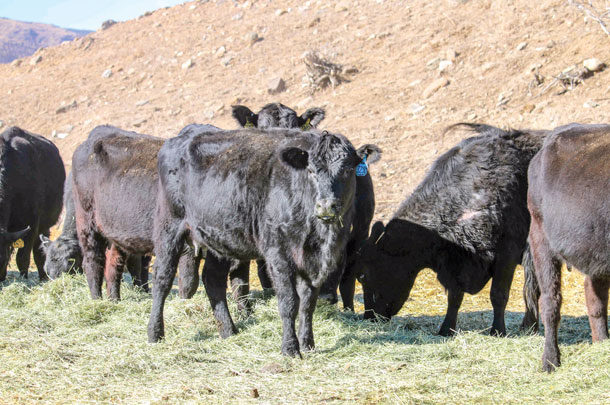Running a successful cattle ranch is more than taking proper care of cows and bulls. A profitable cattle ranch comes from caring for soils, grasses, other plants, wildlife habitat and water, and understanding market demand to meet profitable quotas. When operated conscientiously and diligently, your cattle ranch can become much more than just a profession and can help play a critical part in feeding the world, providing wildlife habitats, protecting the environment and contributing to state and national economies.
Understanding your market
Your cattle ranch is more than the quintessential picture of the American West. It takes an understanding of the complex agricultural systems available in your environment and a consistent analysis of progress and areas for improvement.
If you’re already in the business, continuously educate yourself on the current state of the market. Pay attention to national commodities prices and trends in cattle, and how cattle can be exported to foreign markets to maximize profits. Keep tabs on the state of the ranching sector to ensure you’re adapting your ranch to global demands and preparing for inevitable market fluctuations.
Diversifying your ranch
Whether this means growing, harvesting and grinding your own corn or hay for feed to lower costs or leveraging underutilized space to grow other crops for harvest and trade, diversifying the agriculture and cattle on your land can help cover your production costs and minimize risk, especially for smaller, family-owned ranches. Beef cattle can utilize a variety of feed and can graze on marginal land that grows grass more easily than suited cash crops. If your land offers both, consider how you can utilize space to increase your offerings. Run the numbers for costs, labor and yield to determine if diversification is the right strategy for your ranch.
Reducing costs: Land and labor
When it comes to cattle ranch costs, it comes down to two categories that take up the large majority of your expenses: land and labor. Land costs include expenses such as fencing or water trough repairs, property taxes and leases. Labor costs include any costs related to manual work, such as salaries, benefits, vehicles and equipment.
Consider costs that are short-term or seasonal, such as a piece of equipment that you only need for a few weeks out of the season, and lease or rent it. Buy used or traded equipment for costs like barns, corral systems and trailers, especially if the equipment isn’t motorized and can be easily maintained. Start a network with nearby farmers and ranchers, or join a reputable cattle marketing alliance to share equipment, build relationships and trade ideas and resources as needed. Consider reducing grazing costs by sharing other farmers’ corn and sunflower stalks, to buy on-the-cheap and use as natural feeds. Maximize grazing by containing cattle within small portions of land to reduce undesirable plants, increase grazing efficiency and, ultimately, reduce your land and labor costs, which will maximize your ranching profitability.
Investing in quality cattle
When it comes to investments, cut costs where you can, but don’t skim on the important stuff. According to the Noble Research Institute, spending as little as $750 more on a better bull could net you an additional $1,475 more per bull annually. Buying cattle and bulls with good genes and accelerated growth rates reduces your input and labor while producing heavier cows. If you’re breeding cows on-site, consider temperament, breed history and historic pregnancies to cut time and labor and improve your herd.
Controlling feed expenses
Exclusively grazing cows is rarely the most profitable approach, but using a combination that’s right for your ranch and cattle is essential to moderating your expenses. If growing hay, turning that land into pasture can help renew the grounds and feed cattle at lower costs. If you aren’t personally growing hay, this is an opportunity to leverage your neighbor network to see if they would be willing to allow your cattle to graze on their land to your mutual benefit.
Manure scoring is a great way to monitor if your livestock is getting proper nutrition and can help you adjust your approach to grow optimal cattle. Manure scoring can be easily conducted on a 1 to 5 scale and gives ranchers an estimation of digestibility for the cow’s diet within the past 36 to 72 hours. If they’re eating low-quality hay, you may need to use supplements to provide additional nutrition to your cattle’s diet.
Maintaining year-round awareness
As a rancher, it’s your responsibility to conduct research and practice diligence to maximize your profitability. Consider the people you bring on, the production year over year, and keep detailed records of your costs and yields to continuously adjust your approach month-by-month. For more tips and tricks to effectively run your ranch, read “How to run a ranch that doesn’t run you,” and consider your profession one that never stops improving. ![]()
Bruce Hakutizwi is the U.S. and international manager of BusinessesForSale.com, a global online marketplace for buying and selling small- and medium-sized businesses.
PHOTO: Staff photo.











